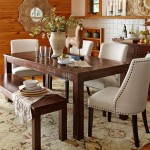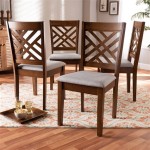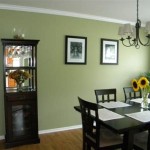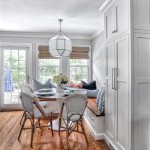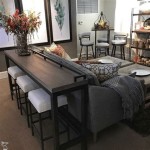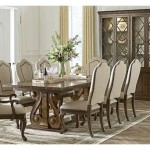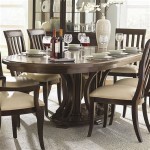Harmonizing Spaces: Dining Room and Living Room Combo Ideas
The combination of dining and living room spaces into a single, unified area is a common design approach, particularly in contemporary homes and apartments. This layout maximizes the use of available square footage, fostering a sense of openness and encouraging interaction. However, creating a functional and aesthetically pleasing dining room and living room combo requires careful planning and thoughtful execution. Considerations must be given to furniture selection, spatial arrangement, color palettes, and the establishment of distinct zones within the shared space.
A successful dining room and living room combination should achieve a balance between functionality and aesthetics. The design should cater to the diverse activities that will take place within the space, from formal dining to casual lounging. Thoughtful zoning, strategic furniture placement, and cohesive design elements are crucial for creating a harmonious and versatile environment.
Defining Zones Through Furniture Arrangement
One of the most effective methods for distinguishing the dining area from the living area is through strategic furniture arrangement. The placement of key furniture pieces can visually delineate boundaries and establish distinct zones within the combined space. Consider these strategies:
Area Rugs: Area rugs serve as visual anchors, defining the perimeter of each zone. A large area rug beneath the living room seating arrangement will create a sense of enclosure, while a separate rug placed under the dining table will define the dining area. Choosing rugs with complementary colors or patterns will maintain visual cohesion while still distinguishing the spaces. Ensure the rugs are appropriately sized for the furniture they will house, leaving enough exposed flooring around the perimeter for visual breathing room.
Sofas as Dividers: A strategically placed sofa can act as a natural divider between the living and dining areas. Position the sofa with its back facing the dining area to create a physical and visual barrier. This arrangement helps to separate the two zones while still maintaining an open and airy feel. Consider a sofa with a low back to minimize visual obstruction and allow light to flow freely throughout the space.
Console Tables and Buffets: Console tables or buffets can serve a dual purpose: providing storage and acting as a visual barrier. A console table placed behind the sofa can offer a surface for displaying decorative items or housing lighting fixtures. A buffet placed along a wall can provide storage for dining essentials and serve as a backdrop for the dining area. These pieces can contribute to the functionality of both spaces while simultaneously defining their boundaries.
Open Bookshelves: An open bookshelf can act as a semi-transparent divider, allowing light and views to pass through while still creating a sense of separation. This option is particularly useful in smaller spaces where a solid wall or divider would feel too restrictive. The shelves can be used to display books, plants, or decorative objects, adding visual interest and personality to the combined space. Consider the height and depth of the bookshelf to ensure it provides adequate separation without blocking too much light or airflow.
The positioning of furniture should consider the flow of traffic within the combined space. Ensure there are clear pathways between the living and dining areas to prevent congestion and facilitate movement. Avoid overcrowding the space with too much furniture, as this can make it feel cramped and cluttered.
Creating Cohesion Through Color and Style
While it is important to define distinct zones within a combined dining and living room, it is equally important to maintain a sense of visual cohesion throughout the space. This can be achieved through the consistent use of color palettes, design styles, and materials:
Unified Color Palette: Choosing a consistent color palette for both the dining and living areas will create a sense of visual harmony. Select a primary color and two or three complementary accent colors to be used throughout the space. The primary color can be used on walls, flooring, or large furniture pieces, while the accent colors can be incorporated through accessories, textiles, and artwork. Vary the shades and tones of the chosen colors to add depth and visual interest to the space.
Consistent Design Style: Maintaining a consistent design style will help to unify the dining and living areas. Whether the chosen style is modern, traditional, bohemian, or eclectic, ensure that the furniture, accessories, and décor reflect that style consistently throughout the space. Avoid mixing drastically different styles, as this can create a disjointed and chaotic look.
Complementary Materials: The consistent use of materials, such as wood, metal, and textiles, can contribute to the overall cohesion of the combined space. If using wood furniture in the dining area, consider incorporating wood accents in the living area, such as wooden picture frames or decorative bowls. Similarly, if using metal accents in the living area, consider incorporating metal hardware or lighting fixtures in the dining area. The same principle applies to textiles: choose fabrics with similar textures or patterns for upholstery, curtains, and rugs.
Repeating Design Elements: Repeating design elements, such as patterns, shapes, or textures, can help to tie the dining and living areas together. For example, if using a geometric pattern on the living room curtains, consider incorporating that same pattern in the dining room placemats or artwork. Similarly, if using a particular shape in the living room lighting fixtures, consider incorporating that same shape in the dining room chairs.
Lighting as Unifier: Lighting plays a crucial role in setting the mood and ambiance of a space. Coordinate the lighting fixtures in the dining and living areas to create a cohesive and harmonious atmosphere. Consider using similar styles of lamps or chandeliers in both spaces, or choosing lighting fixtures with a consistent finish or material. Dimmable lighting is particularly useful in a combined dining and living room, allowing to adjust the brightness and create different moods for different activities.
Careful attention to detail in the selection and placement of accessories and décor can also contribute to the overall cohesion of the combined space. Choose accessories that complement the chosen color palette and design style, and arrange them in a way that is visually balanced and appealing.
Optimizing Functionality Through Strategic Planning
In addition to aesthetics, the functionality of a combined dining and living room is paramount. Careful planning is required to ensure that the space is both comfortable and efficient for all intended activities:
Traffic Flow: Prioritize traffic flow when arranging furniture in a combined dining and living room. Ensure there are clear pathways between the two zones, as well as to other areas of the home. Avoid placing furniture in a way that obstructs movement or creates bottlenecks. Consider the typical traffic patterns within the space and arrange furniture accordingly.
Multifunctional Furniture: Multifunctional furniture is particularly useful in a combined dining and living room, as it allows maximizing the use of available space. Consider a coffee table with built-in storage, a sofa bed for accommodating guests, or a dining table with extendable leaves for hosting larger gatherings. These pieces can serve multiple purposes, reducing the need for additional furniture and freeing up valuable floor space.
Storage Solutions: Adequate storage is essential for maintaining a clutter-free and organized combined dining and living room. Incorporate storage solutions that are both functional and aesthetically pleasing, such as built-in shelves, storage ottomans, or wall-mounted cabinets. Consider the specific storage needs of each zone and choose storage solutions accordingly. For example, the dining area may require storage for dishes, silverware, and linens, while the living area may require storage for books, magazines, and electronics.
Lighting for Different Activities: Different activities require different types of lighting. Incorporate a variety of lighting sources in the combined dining and living room to accommodate a range of activities, from reading and watching television to dining and entertaining. Consider using a combination of ambient lighting, task lighting, and accent lighting to create a layered and versatile lighting scheme. Dimmable lighting is particularly useful, as it allows to adjust the brightness and create different moods as needed.
Acoustics: Consider the acoustics of the combined dining and living room to ensure a comfortable and relaxing environment. Hard surfaces, such as tile or hardwood floors, can reflect sound and create an echo. Incorporate soft materials, such as rugs, curtains, and upholstered furniture, to absorb sound and reduce noise levels. Consider adding acoustic panels to the walls if the space is particularly prone to echo.
By prioritizing functionality in the design of a combined dining and living room, it is possible to create a space that is both beautiful and practical. Careful planning and thoughtful execution are key to achieving a harmonious and versatile environment that meets the diverse needs of modern living.

39 Living Room Dining Combos To Maximize Your Space

15 Ways To Style A Living Room Dining Combo Space Havenly Interior Design Blog

54 Simple Ideas For Small Living Room Dining Combo Edward George

5 Tips For Decorating A Combined Living Dining Room Happily Ever After Etc

54 Simple Ideas For Small Living Room Dining Combo Edward George

15 Ways To Style A Living Room Dining Combo Space Havenly Interior Design Blog

38 Best Living Dining Combo Ideas Room
15 Narrow Living Room Dining Combo Ideas

How To Divide A Living Room And Dining Combo Easily

Living Dining Room Ideas This Is How You Design The Best Combination In 2024

